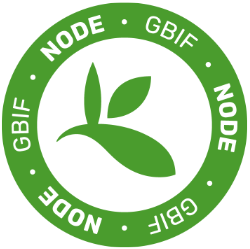First of all, you have two choices for accessing data from iDigBio. You can use the web-based specimen portal or you can use the iDigBio API. Whichever you choose we have some resources to help get you started, as well as some example introductory modules/lesson plans.
Resources for Using the iDigBio Portal
- Watch a quick, 3-minute tutorial created by Molly Phillips or a more detailed 13-minute video tutorial created by Teresa Mayfield on doing basic searches on iDigBio.
- Download a written tutorial on how to search for a species in the iDigBio Portal.
- Visit the Portal tutorial page to find even more detailed information on using the portal.
- Check out this document on understanding iDigBio data downloads.
- Ask for help or give feedback here.
Resources for Using the iDigBio API
- All of the documentation for the iDigBio API can be found here.
- The R package riDigBio interfaces with the data shared by iDigBio. See the Coding Corner for tutorials.
- Find more basic information on the iDigBio Learning Center Page
Introductory Lesson Plans and Modules Using iDigBio Data
Not sure where to start? Here are a couple of examples.
Fantasic Birds and Where to Find Them (Audience: Middle and High School, uses the iDigBio Portal)
5E lesson plan for middle/high school aligned to NGSS standards.
Data is the New Science (Audience: Undergraduates and beyond, uses iDigBio and GBIF data portals)
In this module, students will be introduced to some emerging biodiversity data resources. They will be asked to think critically about the strengths and utility of these data resources and apply what they have learned to research question.
Introduction to R with Biodiversity Data (Audience: Undergraduates and beyond, uses iDigBio API)
Students will learn R basics while downloading biodiversity data from multiple data repositories. This module will walk students through installing R, navigating R, writing reproducible scripts in R, and using R to download biodiversity data.
Cleaning Biodiversity Data in Excel (Audience: Undergraduates and beyond, uses iDigBio Portal, Excel)
Access and clean an open source polar bear dataset using Excel.
Cleaning Biodiversity Data: A Botanical Example Using Excel or RStudio (Audience: Undergraduates and beyond, uses iDigBio Portal, Excel, or R)
Access and clean an open source botanical dataset using Excel and R.
Amphibian Diversity: Species Richness and Precipitation (Audience: Undergraduates and beyond, uses iDigBio Portal and Excel).
This activity will explore how natural history specimen data can be used to investigate the relationship between precipitation levels in a region and species diversity of amphibians.
Find many more examples (and add your own!) in the Natural History Education Portal.







